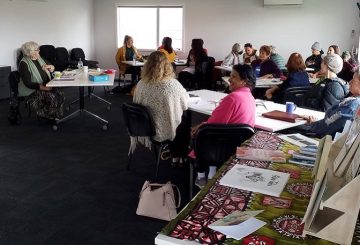新西兰教育局公布了一项新的营销活动,旨在在7月31日边境重新开放后吸引国际学生回国。
“我是新人” 活动围绕来自中国、哥伦比亚、德国、印度、日本、泰国、美国和越南的八位国际学生的故事,他们分享了他们在新西兰的学习和生活经历。
作为该活动的一部分,学生们与屡获殊荣的毛利时装设计师基里·内森(Kiri Nathan)合作设计了一款教育服装,即 “kākahu”,它体现了 manaakitanga(关爱人)、kaitiakitanga(关爱地方)的关键文化价值观以及青春活力的 “pōtiki” 精神更好的方法。
内森女士说:“学生毕业时穿的传统学术礼服是成就的象征,可以及时捕捉快照。”“我们的 kākahu 不仅象征着这一成就,而且最重要的是这些学生已经经历并将持续一生的文化之旅。他们在新西兰的经历改变了他们,将蒂奥毛利人的价值观编织并分享到自己祖国的独特文化中。最终的 kākahu 设计是一项独特的协作努力,具有全球视野和鼓舞人心,就像学生一样。”
该运动的核心思想是,新西兰的教育不仅限于获得学历。
新西兰教育局首席执行官格兰特·麦克弗森说:“我们为全球学生提供的是一个体验新的、不同的、持续不断的事物的机会。”“这是一个全新的视角,它重新定义了全球教育的成功,超越了学位和学业成就,并加深了对终身持续学习价值的理解。”
该活动在科罗拉多州丹佛市举行的世界上最大的国际教育会议和博览会NASFA 2022年上启动。该活动将从2022年6月2日起在新西兰的主要伙伴国家推出,最初将持续12周。


















































-helped-regain-her-strength-and-balance-using-Nymbl-after-a-fall.-360x245.jpg)











